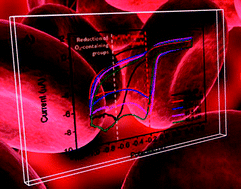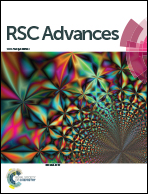Haemoglobin electrochemical detection on various reduced graphene surfaces: well-defined glassy carbon electrode outperforms the graphenoids
Abstract
Monitoring the direct electron transfer reactions of haemoglobin is important for understanding of chemical changes within the red blood cell for haematological studies. However, the facilitation of electron transfer between haemoglobin and bare solid electrodes is challenging. Herein, the influence of carbon nanomaterials; graphite oxide (GO), chemically reduced graphene oxide (CRGO), graphene oxide (GO′), electrochemically reduced graphene oxide (ERGO) and edge plane pyrolytic graphite (EPPG); on the electron transfer between haemoglobin in solution and solid electrodes was investigated. We showed that GO, CRGO, GO′ and ERGO did not exhibit improvement to the electron transfer characteristics of haemoglobin in solution, and bare glassy carbon remains an appropriate electrode material for such application in electrochemical sensing. These findings are in contrast to previous studies, which report an enhancement in direct electron transfer characteristics of haemoglobin immobilized on the electrode surface with employment of carbon nanomaterials, and will have profound impact on further investigation of the electron transfer characteristics of hemoglobin.


 Please wait while we load your content...
Please wait while we load your content...